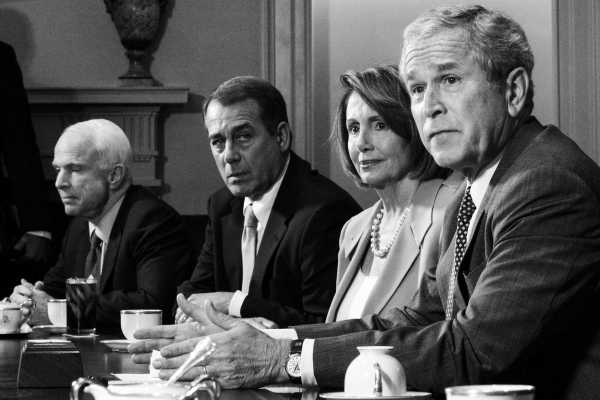 "no" working with Bush. Trump is a whole new test.” alt=”Pelosi learned the art of "no" working with Bush. Trump is a whole new test.” />
"no" working with Bush. Trump is a whole new test.” alt=”Pelosi learned the art of "no" working with Bush. Trump is a whole new test.” />
Pelosi learned the art of “no” from working with Bush. Trump is a whole new test.
“She is not there to simply follow the dictates of any other branch.”
By
Ella Nilsen
Updated
Jan 18, 2019, 9:16am EST
Share
Tweet
Share
Share
Pelosi learned the art of “no” from working with Bush. Trump is a whole new test.
tweet
share
Donald Trump would do well to examine how Nancy Pelosi worked with the last Republican president.
Pelosi disdained George W. Bush for much of his presidency. She fought bitterly with him over the Iraq War and his attempts to privatize Social Security, and the heads of her House committees investigated his administration from top to bottom.
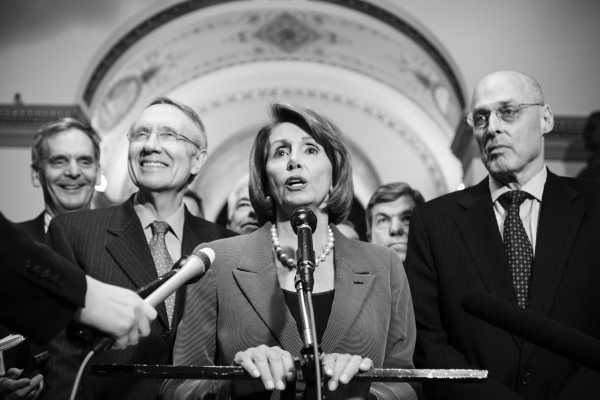
“There aren’t enough words to describe how outraged she was with George Bush and his policies,” said Jim Manley, a former spokesperson for Harry Reid, then the Democratic leader in the Senate.
But in the fall of 2008, Pelosi still wrangled the votes for a massive bank bailout proposed by Bush’s administration, in part because of his willingness to give Democrats some key demands in exchange.
Admitting his party had taken a “thumping” in the 2006 midterms, Bush pledged to work with Pelosi. And he did; in 2007 and 2008, they partnered on a fiscal stimulus bill and a large energy bill that raised fuel efficiency standards, among other things.
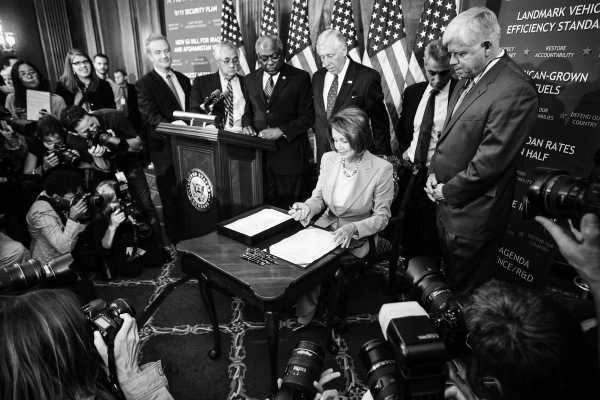
“We had good lines of communication, we had regular meetings down at the White House,” remembered John Lawrence, Pelosi’s chief of staff from 2005 to 2011.
Pelosi is an old-school politician who sees the role of House speaker as standing up for the institution, ensuring it fulfills its constitutional responsibilities, and making deals on bills. Even with a powerful position in the majority, she has had to compromise with the Senate and the White House; for example, agreeing to cut a public option from the final version of the 2010 Affordable Care Act. But she still has a strong record working with both Democratic and Republican presidents.
“She makes it very clear going into negotiations with the executive branch that she is not there to simply follow the dictates of any other branch,” Lawrence told me recently.
Join the Vox Video Lab
Go behind the scenes. Chat with creators. Support Vox video. Become a member of the Vox Video Lab on YouTube today. (Heads up: You might be asked to sign in to Google first.)
As Pelosi begins her second tenure as speaker of the House — this time, amid a government shutdown — Trump would be wise to look back at her working relationship with Bush. The 43rd president learned that when he came to the table willing to truly engage, he could get a deal with Democrats. When he wasn’t, Pelosi wouldn’t cave.
She’s earned respect from her Republican opponents. “I don’t think there’s any question that she’s a very accomplished legislator,” said Michael Steel, who served as a spokesperson for former Republican House Speaker John Boehner.
So far, Trump hasn’t taken advantage of Pelosi’s negotiating posture to bargain his way out of a shutdown he helped create. He’s offered her nothing in exchange for $5.7 billion to fund his wall, and he’s thumbed his nose at her repeatedly — recently walking out of negotiations at the White House with her and Senate Minority Leader Chuck Schumer, and repeatedly taking to Twitter to blame her.
This week marked an escalation between the two leaders; on Wednesday, Pelosi wrote Trump a letter essentially uninviting him from delivering the State of Union address at the House, over security concerns. A day later, Trump abruptly canceled a foreign trip Pelosi and other Democratic lawmakers were set to take to Afghanistan, just an hour before they were scheduled to leave.
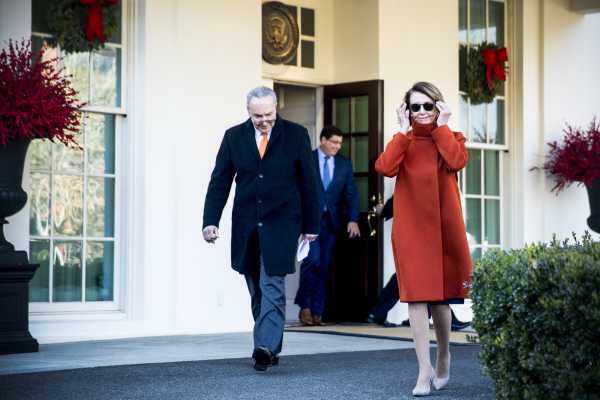
Not only has this left Trump feeling political pain — a recent Washington Post/ABC News poll found the president and Republicans are bearing the vast majority of the blame for the shutdown — he’s also missing an opportunity to reap the benefits of actually getting some of what he wants.
“Don’t characterize the strength that I bring,” Pelosi warned Trump at an explosive White House meeting in December. She meant it.
Pelosi stood her ground in TARP negotiations
As the global economy risked collapse in the fall of 2008, leaders in Congress met with Bush and then-presidential candidates Barack Obama and John McCain to hammer out a deal in a now-famous meeting.
Pelosi and Harry Reid wanted to make sure Congress wasn’t just agreeing to write a blank check to the big banks, which were failing. House Democrats had a list of demands: adding stimulus to provide financial relief for American families who had just seen their savings wiped out, restricting so-called “golden parachutes” for bank CEOs, and requiring banks and other institutions that received bailout money to eventually pay it back to taxpayers — with interest.
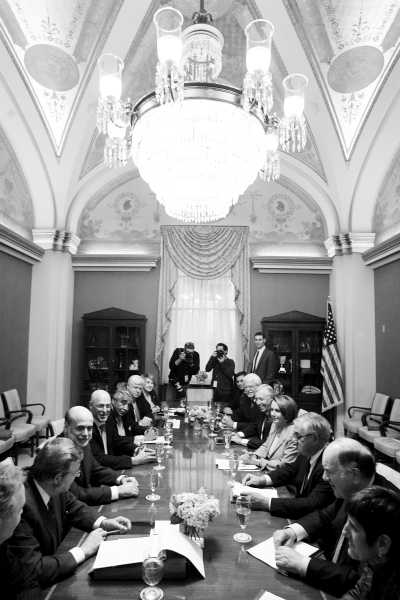
They had gone to the White House expecting to come out with a deal containing some of those sweeteners, but little progress was made. Pelosi had complained Bush wasn’t providing leadership, and indeed, the president was now bickering with House Republicans. It wasn’t clear who was in charge of the proceedings; McCain, who had requested the meeting, offered few of his own ideas, participants recalled.
“It went very poorly,” Manley, Reid’s spokesperson, said.
As Reid, Pelosi, Obama, and their aides stood in the Roosevelt Room trying to strategize on their post-meeting remarks to the press, Bush’s Treasury Secretary Hank Paulson burst in. Paulson literally got down on one knee in front of Pelosi and begged her to not to give up on the talks, and to help save the country from financial ruin.
“Don’t blow this thing up,” Paulson told Pelosi.
Pelosi seemed taken aback by the gesture, as well as the sentiment, former aides remembered. She wasn’t about to accept blame for a deal going nowhere. She was working with the Republican administration; in fact, Bush had singled her out during the meeting for her cooperation, Lawrence wrote in a recent piece for the Atlantic.
With the Treasury secretary on his knees pleading with Pelosi not to tank the negotiations, the House speaker had a calm but sharp retort.
“It’s not me blowing this up, it’s the Republicans,” she told Paulson.
The exchange underscored an important point: The Bush administration was finding more success working with Pelosi than with members of its own party. Though a first vote on the bill failed on September 29, 2008, a second vote in early October on a revised Senate bill made it through the House and was signed by Bush on October 3, creating the Troubled Asset Relief Program.
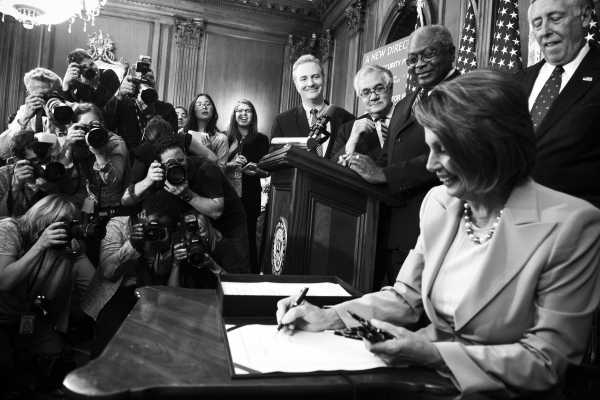
Pelosi didn’t get everything she wanted in the bill, but she steered it through Congress and helped avert a global financial meltdown. The final deal didn’t have as much economic stimulus money as Pelosi had hoped for, but it did restrict executive bonuses (and Obama approved an $819 billion stimulus package when he became president).
Neither party liked the politics of bailing out big banks; still, most congressional leaders recognized they had to do it. Republicans had grown disillusioned with Bush’s administration, questioning his commitment to free market principles and small government.
“There was a fair bit of resentment among House Republicans toward the administration at that point,” said Steel, who was then working for Boehner in the minority. Steel described what it was like for Boehner to whip Republican votes for the bailout bill with one word: “awful.”
Democrats were deeply distrustful of the White House over intelligence bungling in the lead-up to the Iraq War and were wary of any big Bush priority. Pelosi was plenty skeptical of Bush’s agenda, but she realized the shared responsibility to do something before the failing banks dragged the entire US economy down with them. Pelosi and Bush’s working relationship, bolstered by their previous bipartisan deals, helped the nation during a time of near-calamity.
“The fact there were relatively frequent meetings between the president, the speaker, and the Senate leader turned out to be extremely helpful when we found ourselves in a really horrific crisis in September 2008,” Lawrence said.
Pelosi is saying no to Trump — which he doesn’t usually hear
More than a decade later, Pelosi is facing an entirely different crisis.
Three weeks into a partial government shutdown, there’ve been plenty of tumultuous meetings between Democratic leaders and Trump, but little actual negotiating.
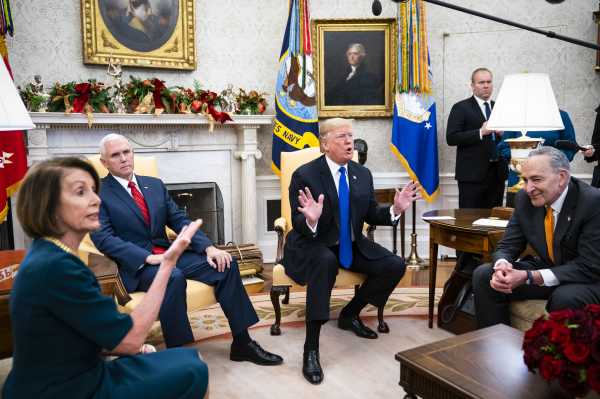
“We don’t want to be a backdrop for the president to stomp the table, get up, and walk out,” Pelosi told reporters last week after Trump abandoned the negotiating table. “I think he thought we were going to stay there when he left. He got up, we got up!”
Pelosi was able to navigate a genuine national crisis with Bush, a man she didn’t like or trust. Bush respected Pelosi’s ability to work in a bipartisan way and deliver votes. And Pelosi and Reid were clear with him, as they later were with Obama: They were there to work with presidents, not for them.
“I’ve seen her in these meetings with presidents, including with this president, when she said she told him, ‘You’re wrong,’ when he said he won the popular vote,” said Nadeam Elshami, Pelosi’s chief of staff from 2011 to 2017 and a top communications aide before that. “So she does not shy away. She respects the office, but she wasn’t going to give an inch.”
But some of her former top aides note that Trump is fundamentally different from his predecessors. He’s a volatile person who constantly spouts falsehoods and manufactures his own crises. Trump has demonstrated he’s not trustworthy, and he and Democratic leaders cannot agree on a basic set of facts from which to start a negotiation.
“We all know what’s different: It’s the president in office,” Elshami said.
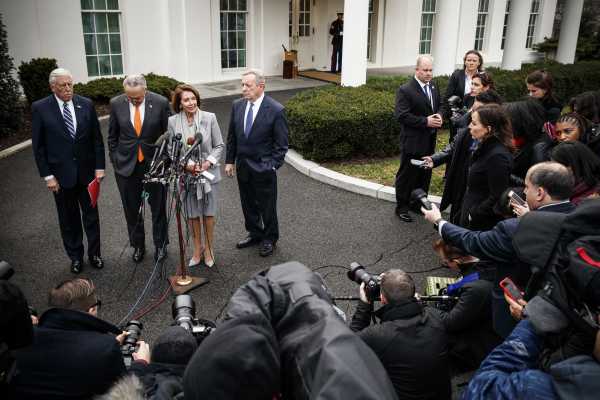
Like she was with Bush, Pelosi is facing the demands of a Democratic base who wants to see the president impeached. She has also made clear that Democrats want to work with Trump where they can, on issues including an infrastructure package and lowering prescription drug costs.
Steel, the former Boehner aide, predicts that could be tricky.
“The base of the Democratic Party is so vehemently, if not violently, opposed to him,” he said. “Had a different Republican won the nomination, it would be relatively straightforward to predict areas where there might be common ground.”
Nancy Pelosi and Paul Ryan are different
Now that Pelosi is back in power in the House, the dynamics are vastly different than they have been for the past two years. Trump “hasn’t experienced Nancy Pelosi in the majority, let me just say that,” Elshami told me.
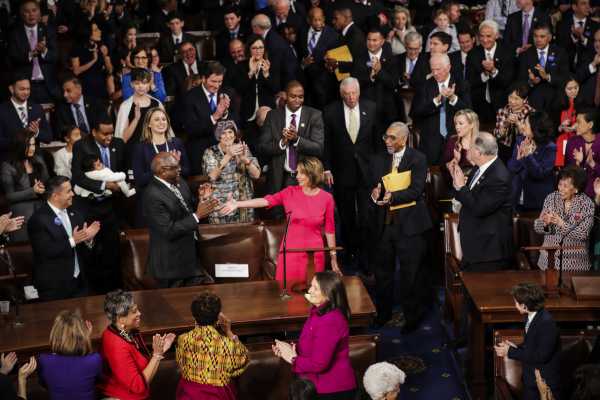
For the past two years, Speaker Paul Ryan kowtowed to Trump’s demands on immigration. Ryan’s final act as speaker was to add $5.7 billion for Trump’s border wall to a clean government funding bill. The addition effectively killed the bill in the Senate and allowed Trump to avoid vetoing it.
Ryan’s decision set the stage for a partial government shutdown and punted a fix to Pelosi and House Democrats in the new Congress.
Pelosi, who butted heads with both Bush and Obama, sees the legislative branch as equal to the executive. She went toe to toe with a president of her own party, and she’s doing the same under Trump. Until Trump gives Pelosi something she can count as a real win during the current negotiations, she will continue to tell him no.
Pelosi believes standing up to the president isn’t just her political responsibility; it’s her constitutional one.
She was able to work with a Republican president at a time of genuine crisis. But so many of Trump’s crises have been of his own making: family separation at the border, the Muslim ban, a lack of response to Hurricane Maria, and now Trump’s third shutdown of his presidency — the longest one in history.
What will happen if Pelosi and Trump are faced with a real national crisis, on the scale of the 2008 financial meltdown? No one really knows.
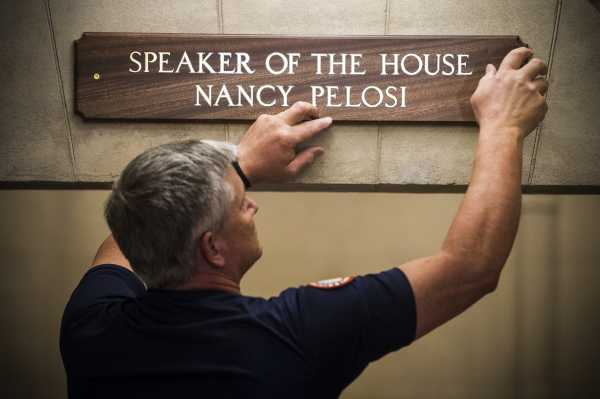
Sourse: vox.com






